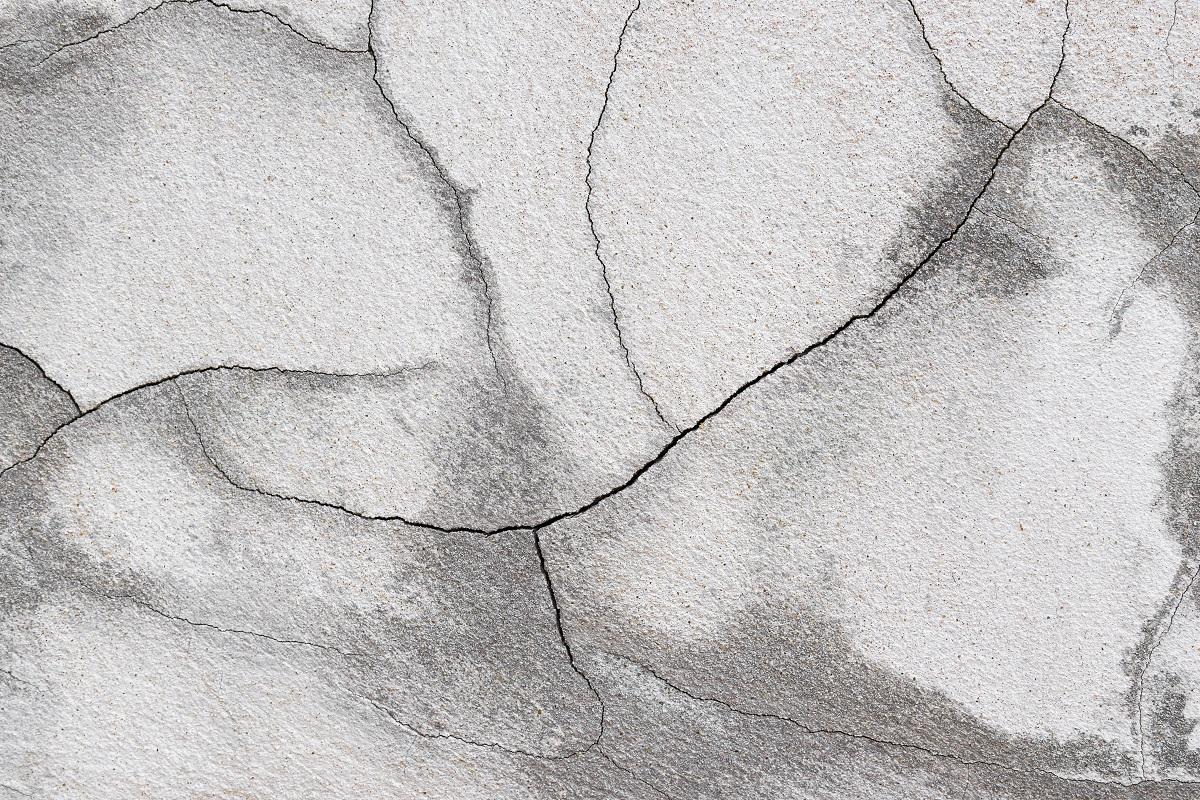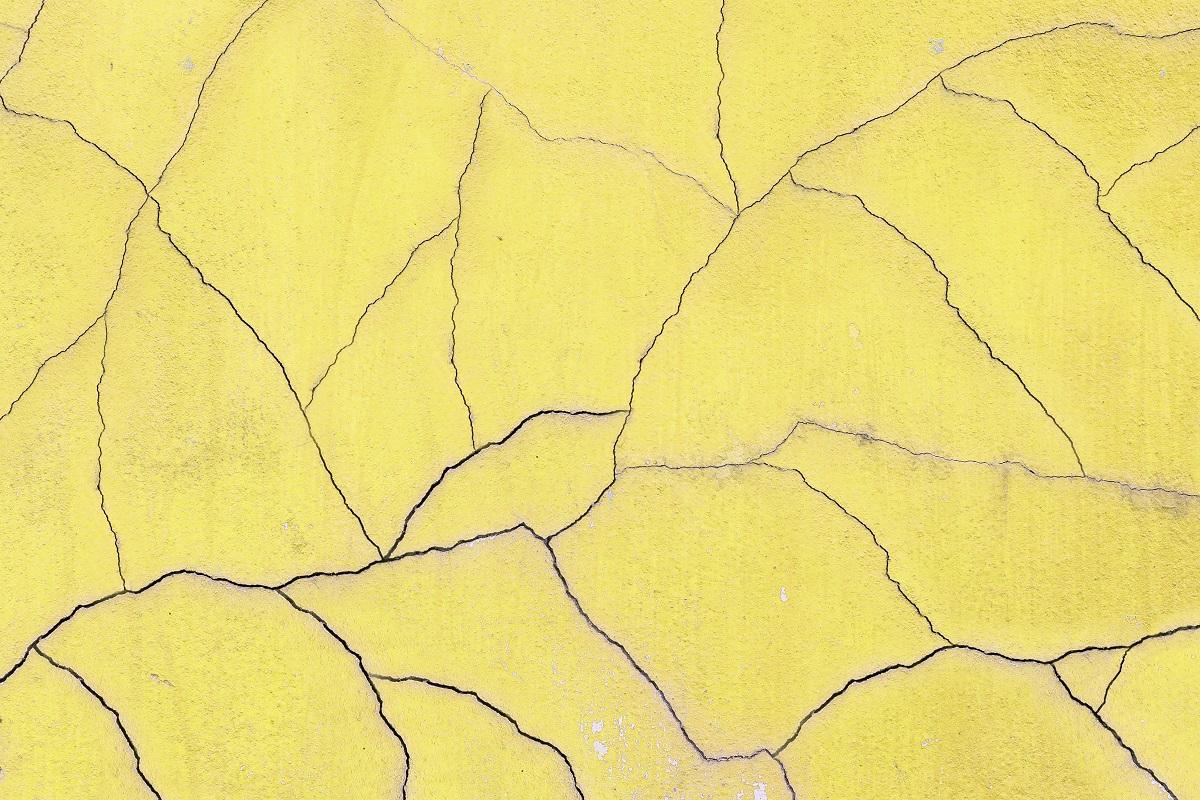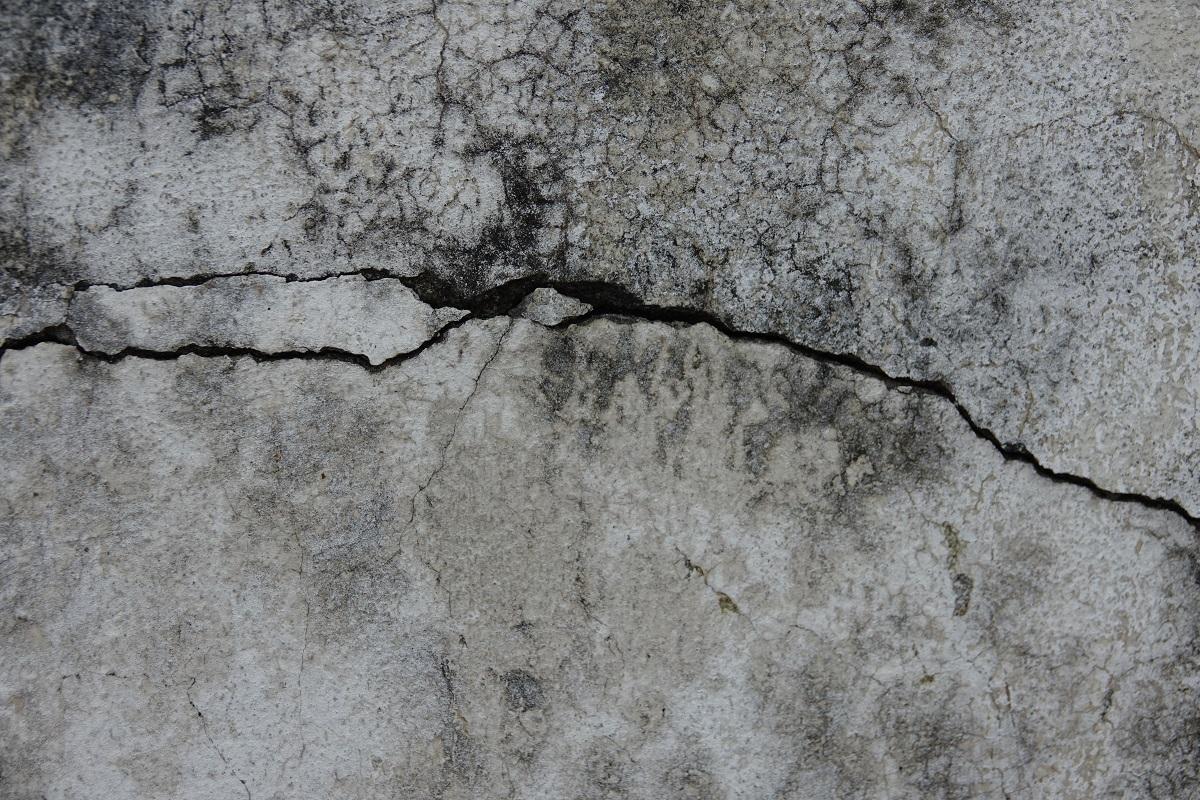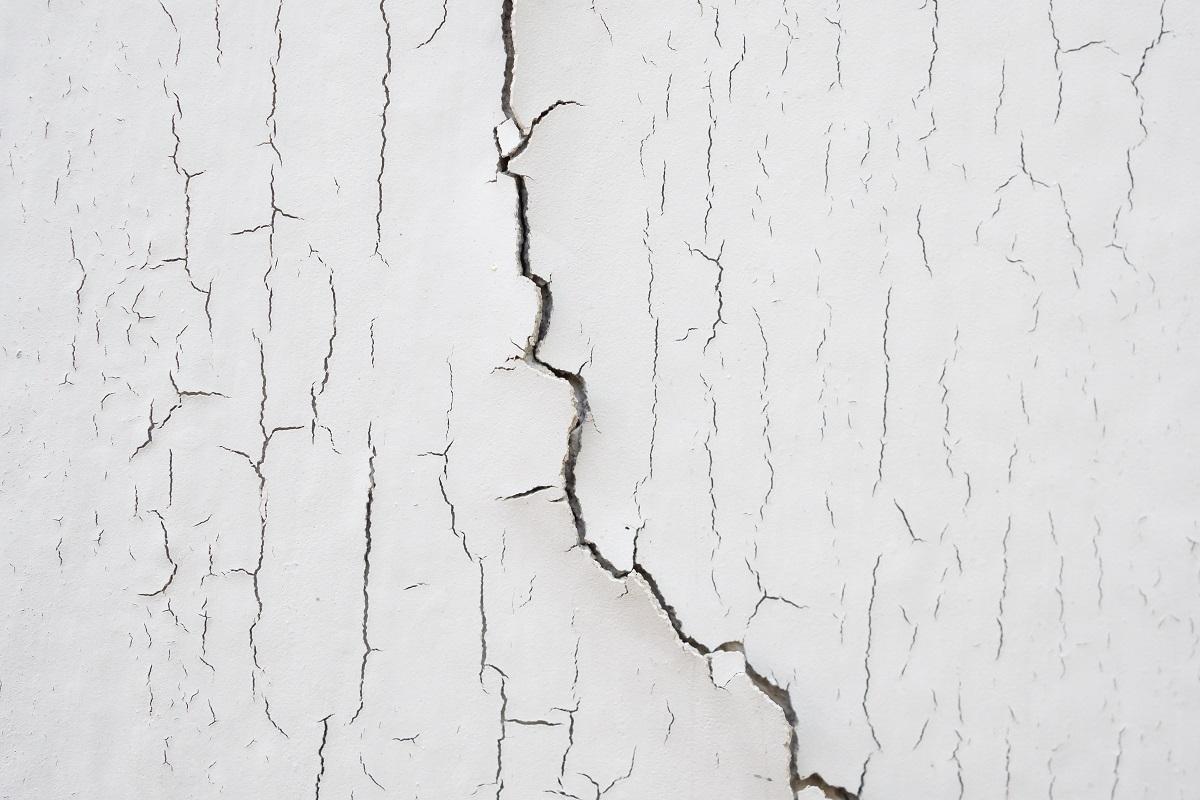Concrete crack fillers come in handy when you notice cracks on your concrete surfaces. But ever wondered why does cement crack over time?

Well, the primary reason is poor application techniques or improper mixing of the concrete in the initial stages. And if there are cracks on the road, they can be attributed to improper mixing of asphalt and concrete. In that case, you’ll need the best asphalt crack filler instead.
But this is only applicable when the damage is minimal. In other cases, you might have to get your concrete surface replaced completely. Or you can ask us a different question - can old concrete be resurfaced instead? Well, yes it can!
In any case, we need to first understand the reasons behind concrete cracking in greater detail, which is what this article is all about. We have also briefly discussed a few ways you can avoid the hassle of replacement and resurfacing in the long-run.
Why Does Concrete Crack?

If you want to know why concrete cracks, then you should first have some idea about its composition and mode of action. Cement is a mixture of different materials, such as limestone, chalk, clay, and traces of iron.
This mixture constitutes the powdery material, which is then combined with sand, aggregate stone, and water. The final product you get after all the mixing is known as concrete.
Consequently, the ratio of these materials can be altered slightly to change the properties of concrete. In any case, once you add water, a chemical reaction is triggered, which is known as curing. This curing process eventually hardens it if you leave it undisturbed for a while.
Once the concrete hardens, it adheres together firmly which provides stability to the structure. Furthermore, it becomes resistant to water, dirt, corrosion, or any other kind of damage.
Therefore, if it develops cracks, it is because the method of application was wrong or the mixing was done improperly. To expand on this aspect further, here are some of the most common reasons why concrete cracks.
1. Using Too Much Water In The Concrete Mixture
It is crucial to maintain the ratio of water in the concrete blend. You can alter this proportion slightly to vary its properties, as we have said before. However, if you use too much water in the mix, it can develop cracks in the concrete.
Adding excess water leads to a phenomenon known as shrinkage. This is when the extra water starts to evaporate from the mix. As it dries, the concrete “shrinks” or reduces in volume, and the more it shrinks, the bigger cracks it produces.
Typically, concrete does not require a lot of water to cure. Construction workers may use it in excess quantities as it makes the mix easier to apply. If there is more water in the mix than is necessary, the concrete becomes unstable.
Such cracks are often observed shortly after the application of the concrete mix. To be more precise, it depends on the length of the curing process. The cracks often appear within a short time after the concrete has been cured.
To resolve this, you need to follow well-established guidelines regarding the ratio of water and cement that can be used. Avoid mixing excess water to ensure a proper concrete mix. It might require a little more effort to apply it that way. But, it is better to do it this way so that any accidents or cracks can be avoided later on.
2. Rapid Drying Of The Concrete Slab
The curing process usually takes quite a while to complete. During this time, you need to keep the concrete surface sufficiently hydrated. That not only allows it to harden appropriately but also develops its tensile strength, which makes it resistant to internal stress.
If the concrete slab is not kept hydrated after application, it will dry up rapidly. This, in turn, makes it vulnerable to developing cracks. When it dries quickly, the surface shrinks in volume due to a loss of water.
Meanwhile, the interior of the concrete remains the same, as it does not lose water at the same rate. So, a difference in stress develops between the surface and the interior, which eventually leads to cracks.
Most of the time, the cracks that develop due to rapid drying are cosmetic in nature. But, if the ambient temperature is pretty dry and hot, the cracks may even become deep. In that case, you will need to repair them to avoid any structural damage.
To do that, proper curing of the concrete is essential. Make sure to keep the concrete’s surface moist by pouring water over it regularly. You need to follow this moisture curing procedure for some time after application. This will provide enough moisture for the concrete to be cured from the inside.
3. Improper Concrete Strength
Concrete is available in different strengths based on the type of structure that is being built. For building heavy load-bearing structures, such as multi-storeyed buildings, you need concrete that has sufficiently high tensile and compressive strength. Conversely, if you are building smaller structures, then you need to use concrete that has a lower compressive and tensile strength.
So, if you use concrete having improper strength, then it will obviously crack. For instance, if you use low-strength concrete for a higher load-bearing structure, it will start to crack under extreme pressure and stress. Not only that, it might compromise the entire structural integrity, which will pose a serious risk.
Therefore, to prevent such cracks, make sure to use the correct concrete mix. You can consult with your local concrete contractors if you need help with this. They will first inspect the job site and based on that they will advise you on what concrete will be best for the task.
4. Lack Of Control Joints In A Concrete Slab
Using control joints is a mechanism that helps in preventing any unwanted cracks and damages to the concrete. A control joint is a crack that is deliberately left in the concrete slab during application. Its primary function is to allow sufficient room for the concrete slab to contract or expand under different temperature conditions.
Thus, if you use a control joint, you can eliminate the risk of excess stress or compression in the concrete. If you don’t use a concrete joint, then the slab will not have any room to expand or contract when the ambient temperature changes. So, it will result in excess tensile buildup or compressive stress, which will ultimately crack the concrete.
Ideally, control joints should cover the depth of the slab. The distance between successive joints should be around two to three times the thickness of the concrete measured in feet. For instance, the control joints in a 5-inch thick slab should be placed every 10 to 15 feet.
5. Unsuitable Environmental Conditions
Applying and curing concrete needs to be done under the correct environmental conditions, or else it will develop cracks and damages on the surface. Pouring cement in hot weather can dry it up too quickly.
On the other hand, if you undertake the process during the cold winter months, the concrete will become difficult to cure, as the water may freeze and crack the surface. The ground may remain frozen in such weather, which will further prevent the concrete from setting properly. Also, if the ambient conditions are dry or windy, that will evaporate all the moisture from the concrete surface, resulting in cracks.
Therefore, you should try not to pour concrete in hot and dry weather. If you don’t have a choice, keep the surface hydrated enough to facilitate the curing process. The best time to pour concrete is when the weather is slightly warm and humid.

Types Of Cracks In Concrete
Based on the causes, cracks in concrete can be of different types. Some of these cracks are not as serious as the others and can be easily resolved. The other types of cracks can be quite severe and can cause serious structural damage. Regardless of their type, it is best if you fix any crack as soon as possible to maintain the aesthetics and safety of the concrete structure.
The different types of concrete cracks have been discussed below.
1. Hairline Cracks
Hairline cracks, also known as surface cracks, are relatively small cracks that develop on concrete. These cracks are only found on the surface and are usually not very deep or wide. They are very fine, like a strand of hair, and are almost indecipherable when viewed from a distance, hence the name.
Even if they are surface-level cracks and they don’t cause a lot of structural problems, you should get them fixed. This is to ensure that the cracks do not expand or become a serious concern over time.
2. Structural Cracks
Structural cracks are wide cracks that usually run throughout the length of a concrete wall. They are caused due to structural faults or if there is too much stress in the concrete.
When these cracks appear, you should get them fixed as soon as possible. If you don’t do anything, the entire structural integrity of your building will be compromised, which can cause a serious accident. In extreme cases, it may cause the whole structure to collapse, which can lead to severe consequences, including loss of life.
3. Plastic Shrinkage Cracks
Plastic shrinkage cracks generally appear when the concrete is in a liquid or plastic state. This implies that these cracks appear soon after application when the concrete hasn’t fully hardened yet.
When the concrete is in a plastic state, it contains a lot of water. The crack is initially small when it appears, but once the water keeps evaporating, the concrete starts to shrink, and eventually, the crack starts to widen.
Such a crack occurs if you use too much water in the concrete mix, as we have discussed previously. While it does not pose a serious risk initially, if it keeps expanding, it can weaken the internal structure of concrete and make it vulnerable to damage.
4. Settlement Cracks
This type of crack usually occurs when the ground beneath the concrete structure has been compromised. If the soil is too soft or has not been compacted properly, a part of the concrete slab may sink into it abruptly. That can cause sudden stress in the concrete, which ultimately cracks it.
Such cracks are usually narrower at the bottom, and the width increases as you go upwards. They need to be addressed as soon as possible because they indicate weakness in the ground that holds the concrete slabs in place. Ignoring it will only increase the chances of a major accident.

Why Does Cement Crack Final Words
So, now you know the reasons why cement develops cracks. Cracked concrete is dangerous, especially if it appears in residential buildings, as it poses a great risk to life. Not only that, but it can also increase the costs of construction or repairs considerably.
That is why you should address any cracks in concrete immediately. And take measures to prevent them from appearing in the future. For that, you can follow the solutions we have discussed above.
Use steel rebar, wire mesh, and other supporting components to make the concrete even more resistant to cracking. You can also use specialized crack-resistant concrete that can withstand heavy loads and stress without any issues.
That brings us to the end of this guide. We hope you found this to be an interesting read.
Goodbye and take care!
